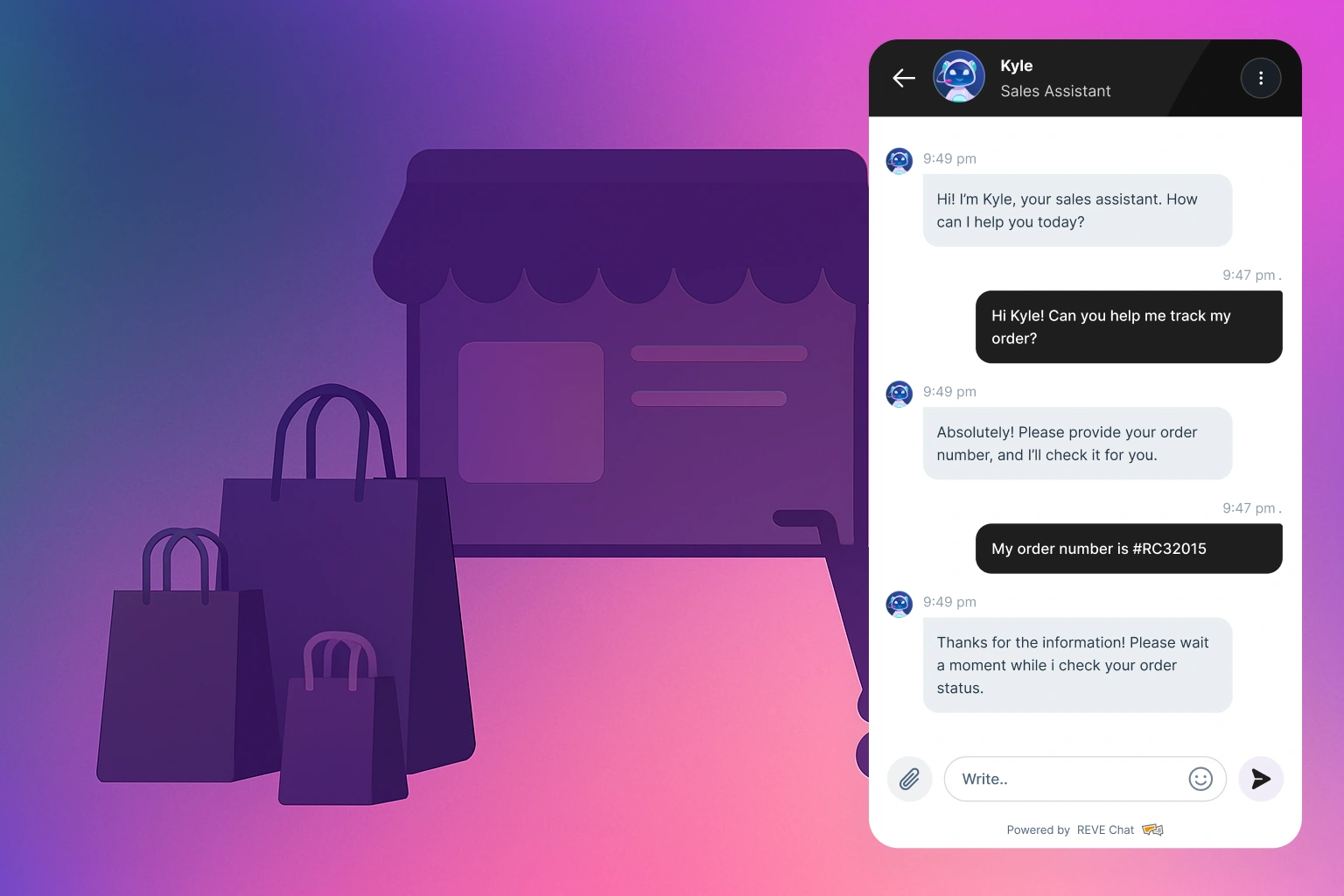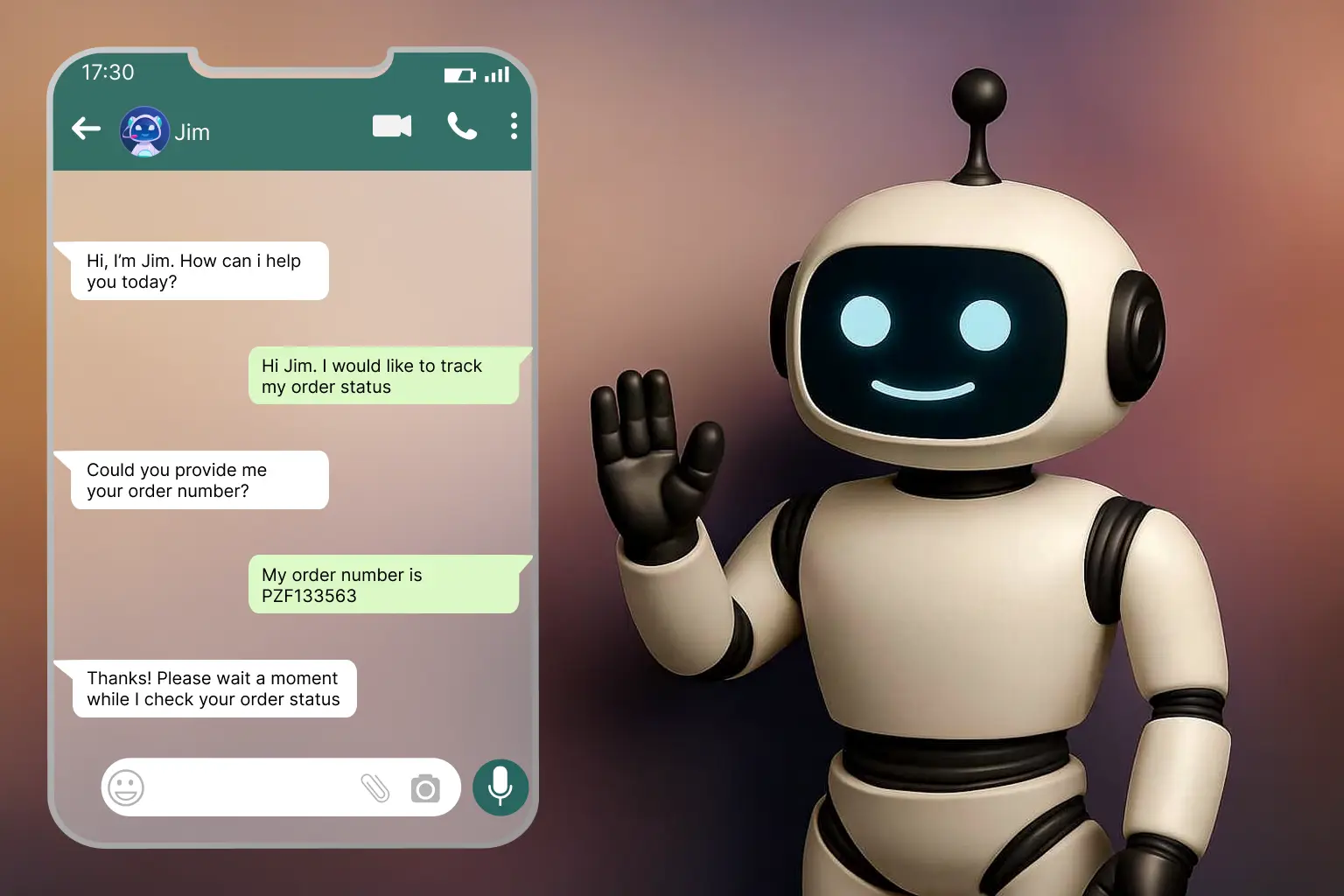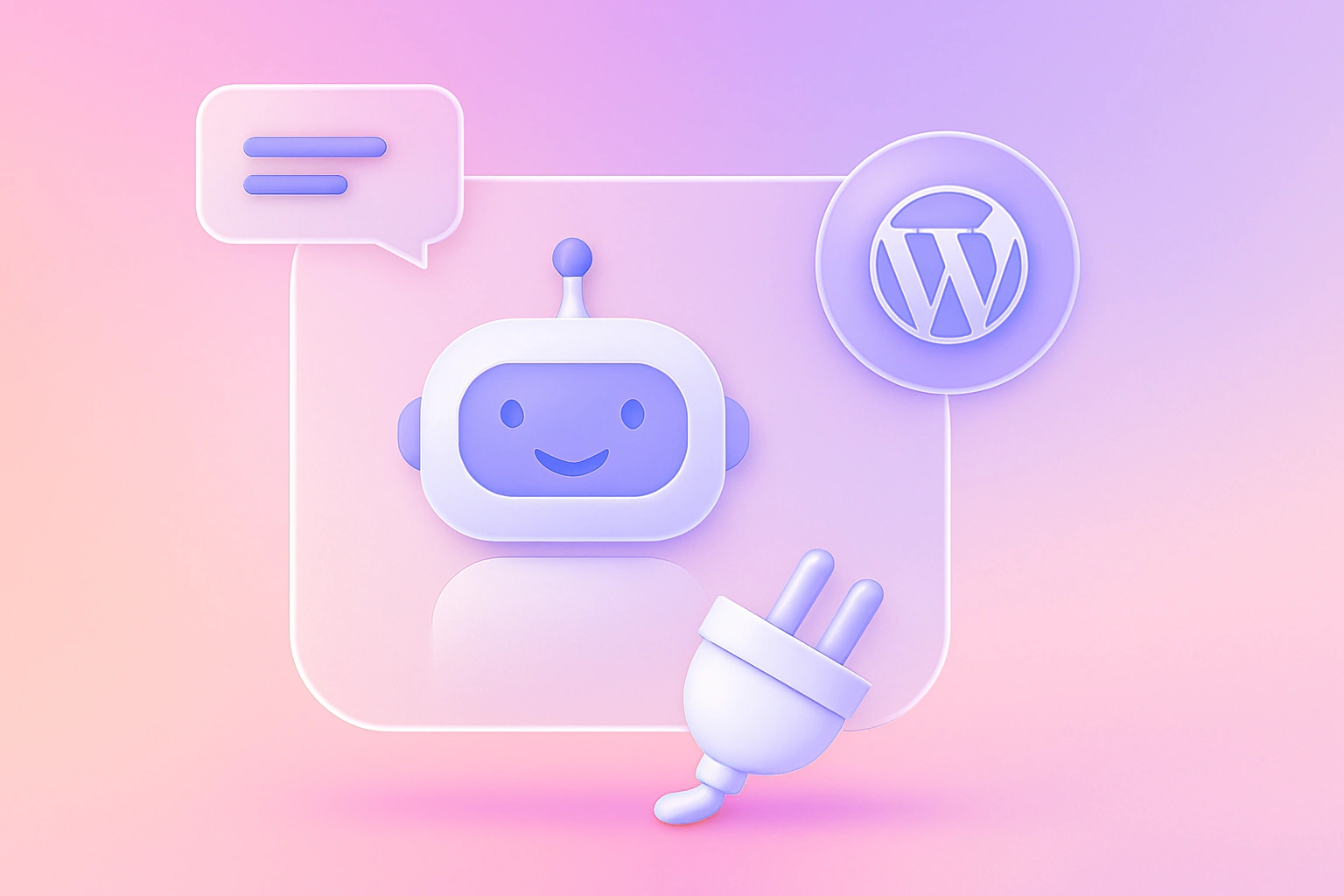Top 12 Chatbots Trends and Statistics to Follow in 2025
- September 4, 2019
- 14 mins read
- Listen

The surge in on-demand messaging has shifted customers’ preferences for communication. With the emerging chatbot trends, more industries are integrating chatbots into their business processes to deliver continuous customer engagement.
Business chatbots are a critical resource for enhancing the consumer experience and providing excellent customer service. Chatbots are transforming the ways businesses connect with current and prospective customers.
As per Gartner, “Artificial Intelligence (AI) will be a mainstream customer experience investment in the next couple of years”. 47% of organizations will use chatbots for customer care and 40% will deploy virtual assistants.
AI has been revamping the ways of communication ways for businesses both with customers and internally. AI is vital for enabling machine learning and the flexible interpretation of automated business communications.
Going further, chatbots are predicted to move from simple user-based queries to more advanced predictive analytics-based real-time conversations.
Key Chatbots Statistics
With the chatbot trends making headway, more and more industries have innovative applications to automate their business processes. They are being adopted by multiple business verticals to deliver excellent customer service and a delightful experience.
Undoubtedly, bots will be transforming the way businesses communicate with their customers & prospects. It has been predicted that conversational disruption may reduce and encourage marketers to prioritize chatbots as a channel for reaching out to users.
The deployment of bot solutions will extend its horizons in the near future. The number one chatbot use case is to address customers promptly, having a bot platform can help to achieve key business metrics like average resolution time and first contact resolution.
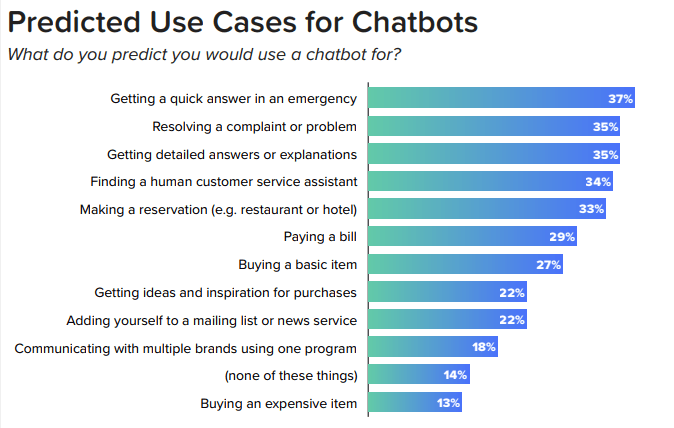
Source: Digital Marketing Community
Key chatbot statistics
Take a glance at the research-based statistics that provide valuable insights into the trends of the chatbot industry. Businesses can consider statistical insights for the successful deployment of virtual assistants.
- The market size of Conversational AI is expected to reach USD$1.3 billion by 2025, growing at a CAGR of 24% (Cognizant)
- The projected value of chatbot eCommerce transactions by 2024 is $112 billion. (Juniper Research)
- More than 50% of enterprises will spend more per annum on bots and chatbot creation than traditional mobile app development. (Gartner)
- 75-90% of queries is projected to be handled by bots by 2024. (CNBC)
- The top industries profiting from chatbots are real estate, travel, education, healthcare, and finance. (Service Bell)
- Chatbots can save up to 50% in customer support costs. (Invespcro.com)
Chatbots: Trends, Statistics and Future Outlook in 2025
The chatbot ecosystem is quickly expanding despite the relatively robust ecosystem that currently exists. Companies from Fortune 500 to startups are implementing the chatbot benefits to gain pace and efficiency.
Let’s review some of the most happening chatbot trends and their future use cases.
1. Chatbots will be more human-like
As per Global Market Insights, “The overall market size for chatbots worldwide would be over $1.3 billion by 2024.” Hence, it is inevitable that the chatbot industry will become the driving force of business communications.
Natural language processing (NLP) bots use sentiment analysis and predictive analytics to intelligently understand the conversations and the intent of the queries. Considering the chatbot stats about how businesses are adopting AI technology, there are still some challenges to implementing chatbot best practices successfully.
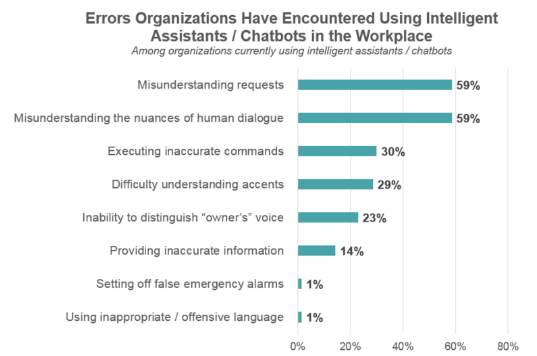
Source: Spiceworks
The key challenges are:
- Misunderstanding requests: Chatbots often misinterpret the requests because they are not able to understand the right intent of the customer.
- Execute inaccurate commands: Chatbots fail to answer any technical commands made by the customers.
- Difficulty in understanding accents: Chatbots are still not capable of understanding accents or cultural dialects to understand the right intent.
Keeping the drawbacks in mind and keeping pace with consumer expectations, businesses now are more focused on building chatbots that are indistinguishable from humans with the help of machine learning (ML), artificial intelligence (AI), and natural language processing (NLP).
Chatbots with a more conversational AI can:
- Deliver personalized and tailored customer experience to build better customer relationships.
- Improve the user experience with your brand and boost customer loyalty.
- Positively affect the customer’s perception to receive positive feedback and build a satisfied customer base.
REVE Chat’s AI Chatbot will help you get great insight and data into your customers. The bot can help you understand the intent of the user’s queries and respond to them naturally.
2. Deep customer insights to drive chatbot behavior
Chatbots are becoming more conversational to communicate effectively and the next step is to improve user experience. Sentiment analysis is important to train chatbots with more human alike capabilities.
It is not just about providing an effective response, you also need to create a delightful customer experience. With the help of sentiment analysis, chatbots could understand whether the conversation was going well and respond to customer emotions accordingly.
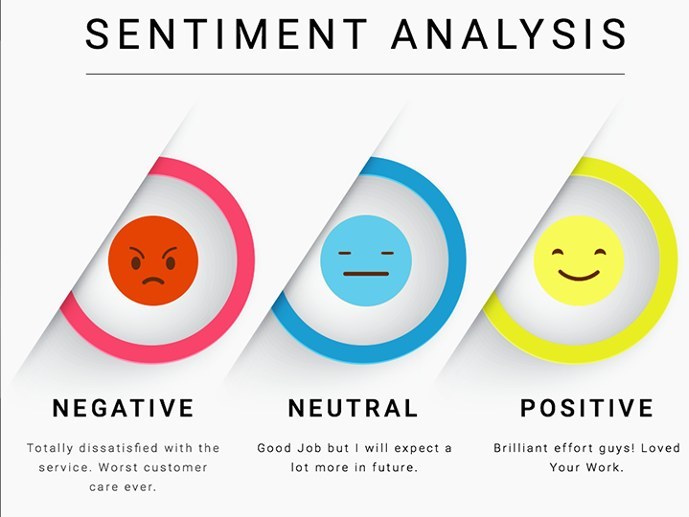
For all the customer insights, chatbots can collect, normalize, and aggregate customer feedback data for further analysis.
Here are some ways chatbot sentimental analysis can enhance user experience.
- Chatbot records the entire customer conversation and, with sentiment analysis, bots can figure out your happy and annoyed users.
- With sentiment analysis, chatbots can modify their responses so that they’re aligned with the customer’s emotions.
- Angry customers are routed to the right team to start a conversation to deliver personalized and effective customer support.
3. Use of AI in contact centers
According to Chatbots Magazine, “Businesses can reduce customer service costs by up to 30% by deploying a conversational chatbot”.
AI chatbot trends aim at saving costs significantly when businesses upgrade from inefficient IVR technology to AI. Bots without human involvement can handle simple requests such as changing a password, requesting a balance, scheduling an appointment, etc.
Here are some common use cases:
- Bots can greatly reduce the number of human agents required and also improve the employee attrition ratio which is due to the repetitive nature of routine calls.
- Employing staff 24×7 in your contact center can be costly. Adding resources to support multiple lines of business hikes the headcount to handle customer queries.
AI future trends in omnichannel contact center:
Chatbots are poised to go through transformational changes to implement AI across their core business processes. Some of these are
- Business automation: Automating the business with chatbots helps to handle simple queries promptly and deliver a better customer experience.
- Customer behavioral prediction: Contact centers can use predictive analysis, for launching a product, AI helps to predict the intent of the customers’ reach out in order to adjust the agents.
- Streamlined experience: Bots can collect information to understand the context of interaction to offer faster resolution by identifying the purpose and improving customer experience (CX).
4. Voice bots are becoming mainstream
Voice is the next big thing!
Users are already used to starting their days with “OK Google, what’s in my calendar today?”. According to Forbes, “More than 50% of all searches will be voice-driven”. It is a greatly emerging conversational banking trend.
It’s all about facilitating your users with a seamless experience with your business, and you can achieve that by voice-driven chatbots. Accenture research says “Digital consumers prefer messaging platforms that have voice and text-based interfaces”.
Why are voice bots gaining popularity?
- Text can be monotonous at times while voice bots engage customers with automated, intelligence-based communication.
- Voice-enabled bot, you can provide reliable data insights to your customers. It also helps in giving correct real-time information.
- Voice bots offer new opportunities for personalization that reduces problems faced while dealing with customer requirements.

Conversational bots utilize artificial intelligence and are capable of assisting over both text and voice. The trend of automating customer engagement will continue to be on the rise in 2025, which will help in sectors such as insurance, travel, and financial services.
In banks, the customer data is combined with the latest data to personalize communication with the customers. In the current time when the competition is at its peak, brands must not miss out on any chance of converting leads into their customers and provide the best-personalized experience as new trends in customer service. 90% of interactions will be automated with the help of chatbots in the banking industry by 2025.
5. The customer experience (CX) will drive chatbots adoption
AI chatbots help to redefine the way businesses interact with customers. In the current time, where social messaging applications are gaining popularity, following the chatbot industry trends will connect you with your customers in a great way.
An increase in customer experience generates an average revenue increase of $823 million over three years for a company with $1 billion in annual revenues. By choosing the best AI chatbot platform, businesses can automate different business functions like lead generation, FAQs, and Customer feedback to boost their customer experience.
Here is how deploying chatbots can improve customer experience?
- Chatbots are best for customers who expect an instant response, typically less than 30 seconds.
- AI bots are active 24×7 to engage customers to handle information-based questions and reduce support tickets.
- Chatbots are easily scalable during busy hours to engage customers and deliver a better customer experience.
Based on the customer experience, businesses can choose the use of chatbots for communicating with their customers.
6. Messaging platforms as a growth driver for chatbots
The concept of conversational commerce is preferred as it encourages buyers to shop online with chatbots. Messaging platforms allow businesses to revive their approach from improving branding to delivering the best customer service.
Going ahead, more and more brands will adopt messaging apps to boost customer engagement and increase customer loyalty as these platforms will have strong bot capabilities along with an integrated approach with various business functions.
Let us take the example of WhatsApp, the most popular messaging channel.
BookMyShow, a well-known Indian online booking app, has integrated WhatsApp for Businesses to send ticket confirmations as WhatsApp messages by default. Users who book tickets on BookMyShow will be notified through a WhatsApp message along with the confirmation text or an M-ticket (mobile ticket) QR Code.
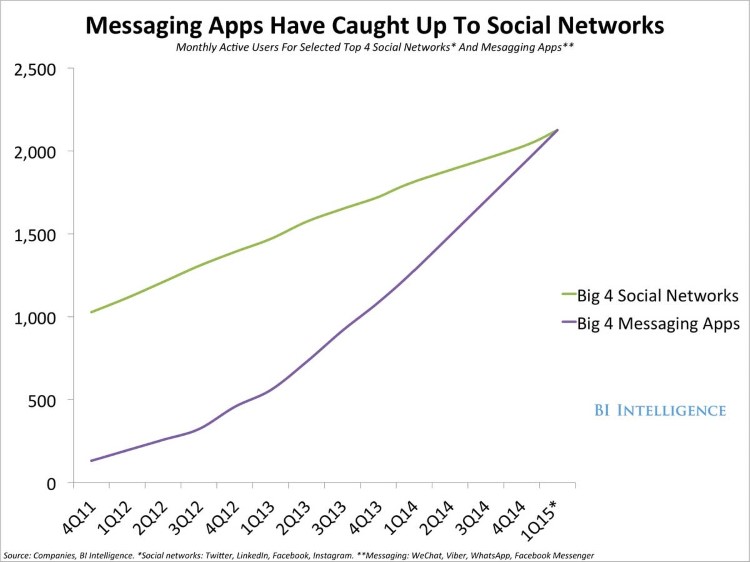
Source: Businessinsider
Messaging platforms having chatbot capabilities can help businesses to drive,
- Marketing engagement: Customers prefer business offering bot support. 47% of users are open to purchasing items through a bot. The chatbot for marketing stats shows that most of the buyer’s trust chatbot as the best way to interact with businesses.
- Customer support: Most chatbots can engage customers by answering their simple queries when the support team is busy or not available. With AI, bots can get smarter to provide better responses.
- Sales & lead generation: Chatbots can be the best channel to automate your sales and lead generation process by qualifying your prospects into leads across your website and social channels.
7. Chatbots will automate payments
Chatbots are drastically changing the way businesses interact with customers, manage campaigns for lead generation, and automate payments. Chatbots Magazine found out 67% of US millennials said they are likely to purchase products and services from brands using a chatbot.
The future of chatbots is that businesses will automate simple payments and allow users to pay directly over live chat or Facebook Messenger apps. The instant process makes the customer happy and improves customer satisfaction.
MasterCard has also launched a chatbot, especially for customer payments. These capabilities of the bots to answer queries related to account balance, assist customers to set payment alerts and collect final payments from customers.

Though data security and information protection are important aspect, it is in a nascent state. It will take a bit of time to catch up on making chatbot use cases.
Similarly, a chatbot template for pricing can help customers get a quick idea about the cost of products or services without involving the human agent.
Here are some main benefits to accepting Facebook Messenger payments:
- Customers can buy directly from Messenger: Your customers do not have to leave their app to make the final payment.
- Trust is a strong word: Many people rely on Facebook Messenger so no issues with credit or debit card security.
- Easy scalability: It is easily scalable – it means you can sell products directly inside your automated Messenger sequences by a 24×7 bot.
- Cost-effective: It is cost-effective compared to traditional channels like live chat and call centers
8. Social media will dominate the adoption of AI
Social media is no more for just making friends. With time, it is used for voicing opinions, ordering products and services, offering reviews, and even getting in touch with businesses. Hence, it becomes a necessity for businesses to use chatbots to facilitate interaction on these platforms.
There are over 100,000 Facebook bots active on Facebook Messenger platform.
Businesses in various sectors have already employed chatbots to use this vital resource to better understand the customer needs and even improve ways that the business can help the consumers.

Leveraging AI across social media marketing helps you understand and track multiple aspects of customer behavior
- How much time do your customers spend online?
- Which social media platform do they prefer?
- What is the actual purpose of using social media?
Artificial Intelligence (AI) helps to analyze voluminous user-generated data to identify trending topics and understand user behavior. It also helps to streamline the processes to work in an effective manner.
9. Bots for internal use for enterprises
Apart from handling customer requests seamlessly, chatbots deliver incredible business value by streamlining internal workflows from small businesses to enterprises.
There are many use cases for AI chatbots with each variant application striving towards one common goal – to improve the experience and efficiency of the user.
Here is how chatbot trends can be used across enterprise functions:
- Human Resource (HR): Chatbots can be used to keep the pulse of your employees, answer basic HR-related questions, and complete transactional HR services.
- Employee onboarding: Onboarding is considered to be a tedious and time-consuming task. Chatbots can initiate the interview process by fielding screening questions and capturing the answers. It also helps in guiding new hires through company policies.
- Internal help desk: Chatbot can handle the common queries and allow IT service desk agents to work on complex queries. The bot learns the answers to repetitive queries and improves the response time.
10. Chatbots will become an integral part of daily lives
Chatbots are becoming more popular by the day. You can search the web and find interesting chatbot quotes to understand the point.
After all, ore and more brands are going to build applications in the future. Bots can collect data and analyze to take important actions.
Bots are used in streamlining personal tasks or day-to-day activities such as fitness, parenting, kids, e-learning, etc.
Fitness chatbots are being developed for discovering user preferences and creating a personalized chatbot experience. It will not be time demanding while engaging the user with their weekly fitness routine.
There are many examples where AI has entered the mobile app world and benefited many sectors like healthcare.
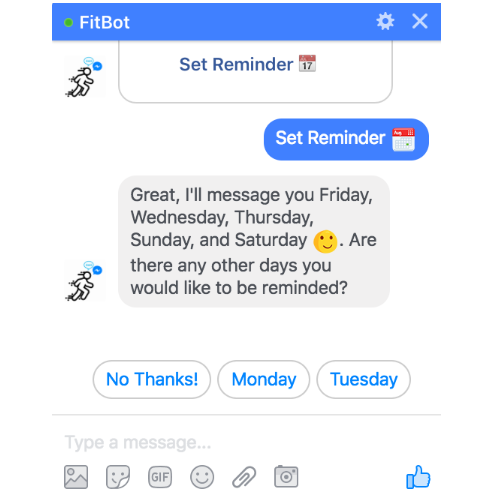
Chatbot technology is one of the most prospering eLearning innovations, which serves as a helping hand by simplifying the teaching methodology. These intelligent bots are often deployed as virtual assistants.
Chatbots have turned out to be the most innovative solution for bridging the gap between technology and education. Implementing chatbots creates an interactive learning experience for the student much closer to the one-to-one with the teacher.
More to learn on chatbots trends
Chatbots are going to the mainstream across diverse business functions and consumer applications. Going ahead, automation will make its roots extra stronger and overcome all the chatbot challenges faced by the businesses.
Chatbot architecture and design will evolve to the point that interactive AI will become standard for customer service. Major tech companies are moving ahead with the development of advanced chatbots and machine learning technology.
Plus, you can develop a chatbot without any coding knowledge. Sign up to build an advanced bot for your business and take steps to service customers in a better way.
Having a deep understanding of your business, your customers, and all of your requirements – and implementing chatbots trends accordingly – will have a significant impact on not only the customer experience but also the overall customer journey
Frequently Asked Questions
By 2025, the global conversational AI market is projected to reach $1.3 billion, showing a CAGR of 24%. The growth will happen due to the increased adoption of AI-driven bots across industries.
For 2025, popular chatbot trends include –
- AI-conversational bots will become more human-like.
- Natural language processing (NLP) will further improve and evolve.
- Voice-enabled bots will be more in focus.
- AI-driven consumer insights will be more in demand.
- More integration of chatbots will happen in messaging platforms.
Not really. AI chatbots won’t replace customer service agents; rather, they will complement human agents. Both AI bots and human agents will co-exist and collaborate, with the former handling more routine queries while the latter takes over complex issues.
Today, more than half of global searches are voice-driven, and this is expected to grow further. With more voice-driven searches happening, businesses will feel motivated to integrate voice AI to boost customer experience. So, in the next few years, more industries, especially healthcare, banking, and e-commerce, will spend more on voice bots to deliver hands-free interactions to customers, resulting in the growth of the AI chatbot market size.
Chatbots will be used more by industries where customers expect an instant response, typically in less than 30 seconds. More companies will use bots to manage information-based questions and reduce support tickets. Since bots are easily scalable during busy hours, they will be deployed more by businesses to engage customers and deliver a better customer experience.


